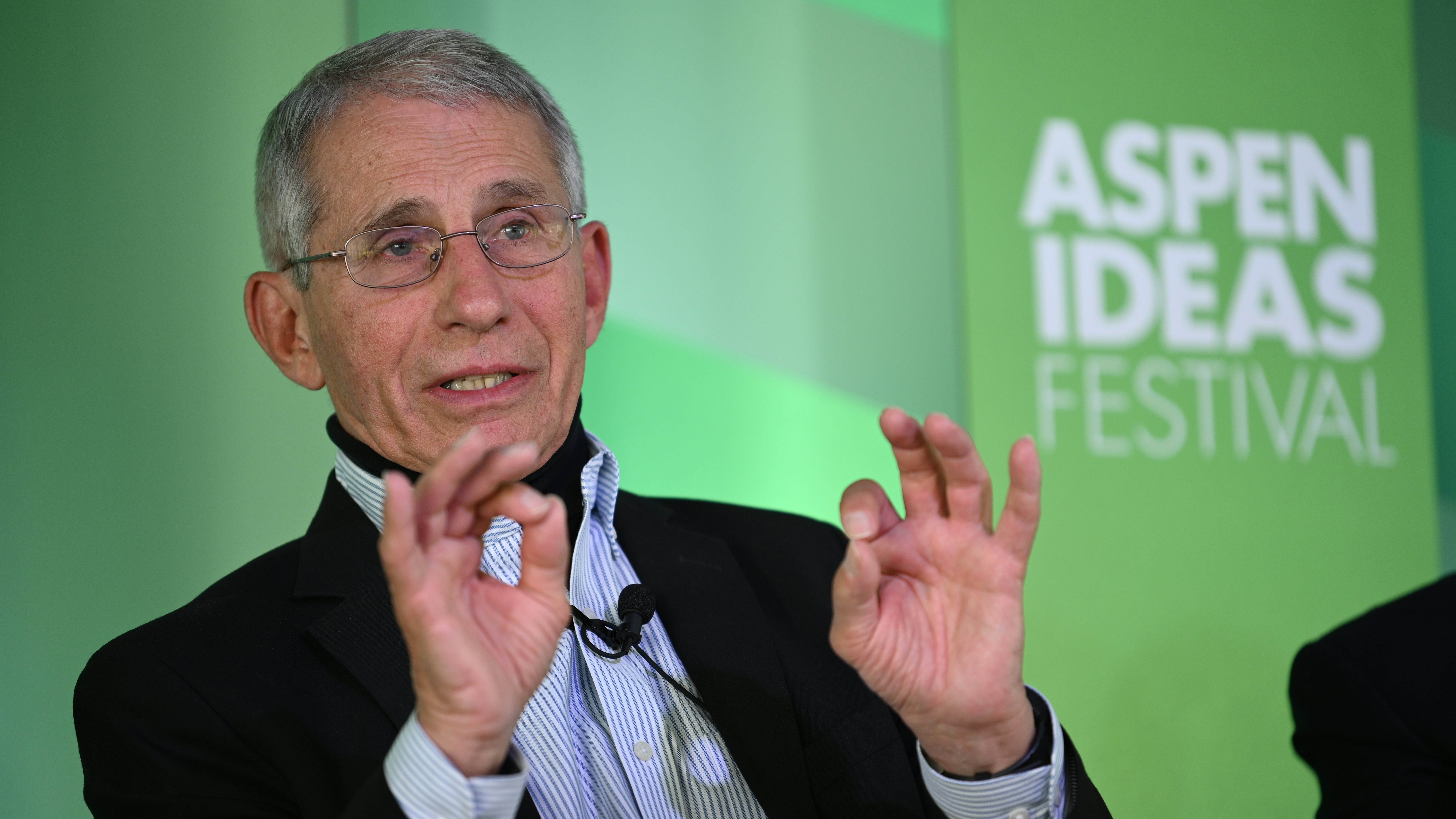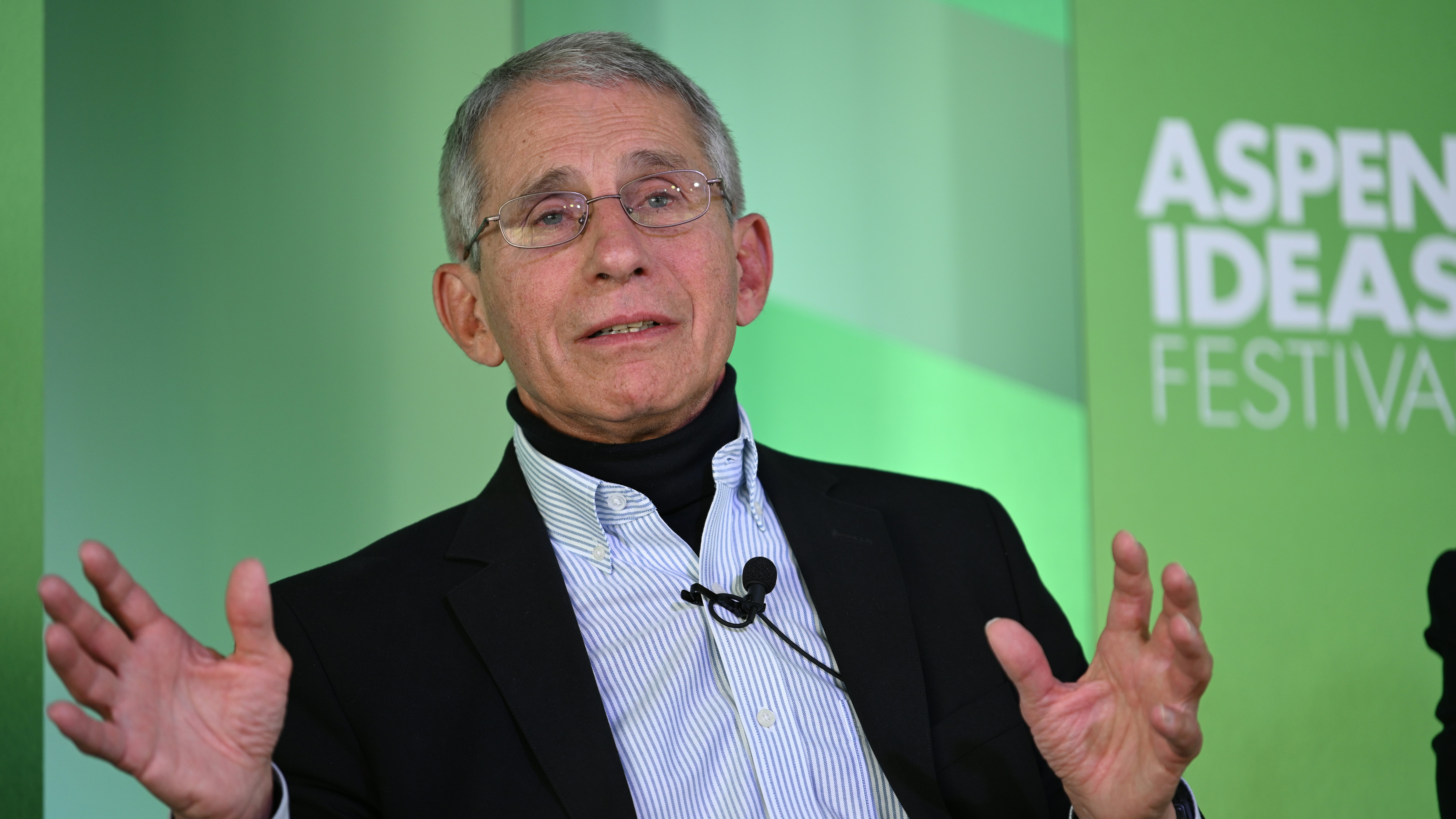
Eliminating HIV: Progress, Possibilities, and Roadblocks
Setup
Can we end the HIV epidemic in the next five years? President Trump pledged in February to do just that, but it will take vigorous research, aggressive outreach, new global commitments, better access to evidence-based treatment, attitude changes — and resources. Although the viral infection has drawn less attention in recent years, some 37 million people still live with HIV/AIDS, including one million in the United States; 5,000 new infections occur every day; and AIDS killed 940,000 people in 2017. Hear from powerhouse scientists and preeminent thought leaders, including some who have been fighting AIDS before it even had a name, about how we reach our ambitious goals.
Speakers
-
 Anthony FauciFormer Director of the National Institute of Allergy and Infectious Di...
Anthony FauciFormer Director of the National Institute of Allergy and Infectious Di... -
 Olga KhazanStaff writer at The Atlantic
Olga KhazanStaff writer at The Atlantic -
 Mark DybulFaculty Co-Director, Center for Global Health and Quality and Professo...
Mark DybulFaculty Co-Director, Center for Global Health and Quality and Professo... -
 Claire SterkPresident and Charles Howard Candler Professor of Public Health, Emory...
Claire SterkPresident and Charles Howard Candler Professor of Public Health, Emory... -
 James CurranJames W. Curran Dean of Public Health, Rollins School of Public Health...
James CurranJames W. Curran Dean of Public Health, Rollins School of Public Health...
Ideas
- 2019 Health
- Health
Why are communities struggling to utilize existing tools for HIV prevention?
There’s no substitute for an HIV vaccine
While James Curran, dean at the Rollins School of Public Health, raves about the incredible breakthroughs that have changed HIV prevention and treatment, he cautions that these tools simply aren’t sufficient. Antiretroviral drugs can control existing infections and pre-exposure prophylaxis (PreP) can drastically reduce cases of HIV, but the scale of the current epidemic requires something bigger.
Big IdeaWe’re not talking about something that’s going to be over with. If we’re successful, we’ll still have 30 or 40 million people in therapy for 30 or 40 years.James Curran
With 10s of millions of HIV-positive individuals around the world living with the disease, Curran thinks a vaccine that completely stops the spread of the disease should be the ultimate goal.
Progress means meeting people where they are
Claire Sterk, president of Emory University, says HIV researchers should put individuals and communities first when working to fight HIV. (This quote has been edited and condensed for clarity)
-

Claire Sterk: We have a lot of people who fall through the cracks. We talk about discrimination, racism, classism, and lack of access, and all of that’s the case. But when you really go into communities and talk to people who are at risk or are infected, it means nothing. It’s about the whole person, the whole community...We need to get smarter about the science of understanding people and meeting people where they are, otherwise we will continue to have a gap between what we could do and what we’re doing.”
Advances in treatment are only as effective as their implementation strategies, and when researchers don’t take the extra step of building community trust and understanding, they won’t see the results the treatments promise.
The gay community in the 1980s is a model for community response to HIV
What does a community that’s mobilizing to combat HIV look like? What can other communities learn from those who were successful? Anthony Fauci says look to the gay community in the 1980s, when people came together to fight HIV:
Combating HIV offers some unexpected benefits for youth health
The HIV epidemic globally is mostly impacting young people. Figuring out how to get young people tested and treated for HIV is a problem many communities can’t solve. But Mark Dybul, co-director of the Center for Global Health and Quality, sees opportunities to couple HIV intervention with other health prevention measures for young people.
Why it Matters
Dybul stresses that young people don’t seek out health care overall, not just for HIV. But if care providers can combine health care for mental health with HIV care, for example, not only will it be easier to deal with complications in treating HIV, but the general health of youth communities would drastically improve.
Learn More
Additional Information
Glossary
Pre-exposure prophylaxis (PreP)
PreP is a pill used as a preventative measure for those with a high risk of contracting HIV, which, when used properly, can substantially reduce HIV infection rates.
Resources
2019 HIV Prevention Progress Report — Centers for Disease Control and Prevention
HIV Treatment: The Basics — National Institutes of Health
Explore More
Health


The rapid development of the Covid-19 vaccine and the ramp-up of manufacturing and global distribution were unprecedented feats of medical coordination. But those on the insid...

Since 2014, Aspen Ideas: Health has welcomed nearly 800 inspiring women leaders to our stages to share their bold approaches to better health. In honor of Women's History Mont...

Our attitudes, habits, pleasures, and responsibilities shift across the generations, influencing the health challenges we face and how we respond to them. Expectations about h...

Setting audacious goals helps to redefine what is achievable in health, medicine, and science. As we deepen understanding of the human genome, unravel the mysteries of the bra...

As we wrap-up another year of elevating big ideas at Aspen Ideas: Health, we're excited to share the 15 most-watched sessions from the event. These conversations with inspirin...

In America, millions of people struggle with mental health including depression, anxiety, and more — all further exacerbated by living through a pandemic. The National Allianc...

The United States spends $4.3 trillion—almost one fifth of the nation’s GDP—on health care. As the scale of the medical enterprise expands, venture capitalists are pursuing th...

Today's kids are coming of age against a backdrop of political, social, technological and economic upheaval. While these circumstances are shaping a precocious generation that...

Advocates, healthcare providers, legislators, researchers, and venture capitalists are bringing the unique health needs of women to light – from vigorous policy debates on iss...

From the debate over reproductive rights to the epidemic of gun violence to the youth mental health crisis, this year's Aspen Ideas: Health sessions tackled many of today's mo...

The recognition that all things are connected is at once a scientific principle and a philosophical touchstone. Humans, animals, and the environment are intertwined in complex...

Our need for human connection is profound and deep. Yet, today, one in two adults are living with measurable levels of loneliness – and the numbers are even higher among young...

Artificial intelligence is revolutionizing health care by improving patient navigation, telehealth and the speed of drug development. From enhancing patient and provider exper...

Brain-computer interfaces show potential to restore function to people impacted by incurable neurological conditions such as stroke, spinal cord injury, traumatic brain injury...

Neurodivergent people make up 15% to 20% of the global population, and visionaries are busy trying to foster welcoming environments in areas like adaptive sports, fashion des...

Across the globe, humans are living and working longer than ever — and today’s systems, governments and businesses aren’t prepared. Examine how we can reimagine work, wealth a...

Given what we learned from the global turbulence from COVID-19, are we any more prepared for the next pandemic? Author and journalist Michael Lewis and Adar Poonawalla, CEO of...

Few people are more deeply steeped in science than Francis Collins, former director of the National Institutes of Health and the groundbreaking Human Genome Project, and forme...

Climate change is a threat multiplier with a disproportionate impact on vulnerable populations. Girls and women, who are denied equitable access to education and economic oppo...

Featuring inspiring conversations, the closing session is not to be missed. First, U.S. Surgeon General Vivek Murthy and Jennifer Ashton of ABC News explore the loneliness epi...










